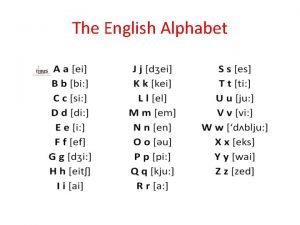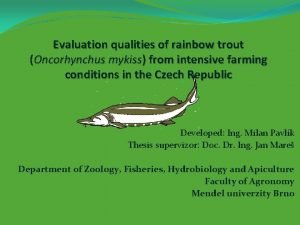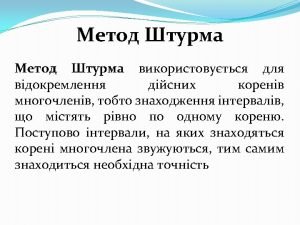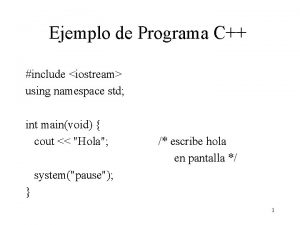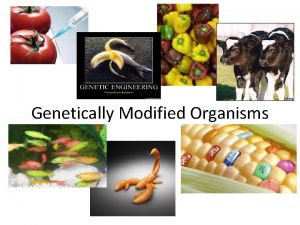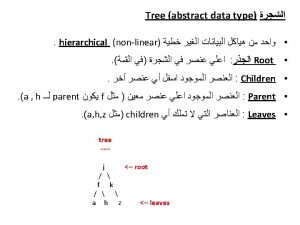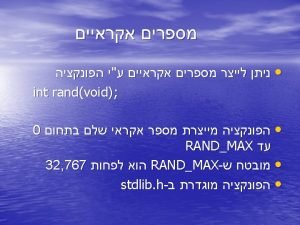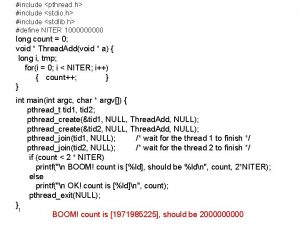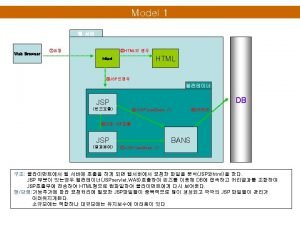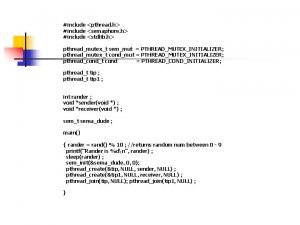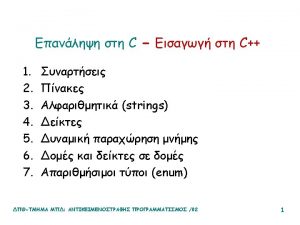Genetic Analysis of Oncorhynchus nerka modified to include























- Slides: 23

Genetic Analysis of Oncorhynchus nerka (modified to include chinook salmon) Project # 199009300 Madison S. Powell University of Idaho Center for Salmonid and Freshwater Species at Risk

Cooperative conservation hatchery programs for anadromous Salmonids • Redfish Lake sockeye salmon captive broodstock programs • Salmon River spring chinook captive rearing programs Systemwide Mtn. Snake

Conservation Hatchery Programs • Redfish Lake sockeye salmon captive broodstock programs • Ongoing since 1991 - - breeding program • Progeny developed to maintain breeding population and to meet reintroduction targets • Milt cryopreserved since 1991 (wild males, wild outmigrants, wild residual sockeye, F 1 program males) • Salmon River spring chinook captive rearing programs • Ongoing since 1995 - - primarily a rearing program • Adult chinook released for natural spawning • Limited spawning conducted to examine maturation variables • Milt cryopreserved since 1996 (three stocks, multiple age-classes

Genetic Monitoring and Evaluation Projects 199107200, 199204000 Redfish Lake sockeye captive broodstock programs • Genetic analysis of all returning adults • Spawning matricies for all program fish • Evaluation of outmigrant assemblages (population origin) • Evaluation of broodstock fitness (parental contribution) • Evaluation of production vs. conservation subunits • Evaluation of incidental take of listed sockeye • Evaluation of strays Projects 199700100, 199606700 Salmon River spring chinook captive rearing programs • Genetic analysis of all captive adults and trapped parr/eggs • Spawning matricies for all program fish using MAI • Evaluation of outmigrant assemblages (parental assignment) • Evaluation of broodstock fitness (supplementation contribution) • Evaluation of production vs. conservation subunits

Reasonable and Prudent Alternatives • RPA 182 Develop studies to determine reproductive success of hatchery fish relative to wild fish in each ESU before 3 yr implementation check in 2003. • RPA 184 Develop hatchery research monitoring and evaluation to determine whether hatchery reforms reduce risk of extinction to salmonids • RPA 175 and 177 Implement and sustain ongoing NMFS-approved safety-net projects

Guiding conservation goals • Conserve populations in the short-term reduce demographic and environmental risks that could lead to extinction • Conserve population adaptive capacity and speciation potential maximize effective population size (Ne) and maintain genetic diversity

Conservation Objectives Maximize the number of breeders Equalize sex ratios of breeders Increase gene flow between year classes Infuse previously lost genetic diversity back into the populations Maintain effective population sizes Manage genetic risks (drift, selection, inbreeding)

Accomplishments • Monthly and annual reports to Technical Oversight Committees • 3 M. S. students at University of Idaho, 1 Post-doc at WSU • 1 thesis, 4 peer-reviewed manuscripts • Analyses of O. nerka in Basin. (40 pops. , >4000 samples) • Analyses of stray O. nerka • Analyses of incidental take and commercial harvest • Spawning matrices for sockeye and chinook salmon • Implementation and evaluation of MAI • Evaluation of stocking strategies Program costs 1993 – 2002: $81. 63/per sample

Accomplishments 1 7 9 1 0 8 2 463 1 2 5 1 1

Evaluation of spawn crosses How do you Cross? Random Mating vs. Genetic Information Are there returning individuals more genetically important than others? Do we have the power to determine this? How about cryopreserved milt? Select for diversity in available genetic markers or use markers as a tool to monitor genetic diversity?

Prioritizing sockeye spawn crosses • Daily spawn preference sheets developed Female Males AN ’ 91 cryo BY 96 A 3 x AN 98 X BY 96 B 5 x BY 96 LL ANH 99 H 9 x ANH 99 H 25 • Three or four sub-families created per female • Males used multiple times with different females

Developing breeding plans for sockeye • Pedigree information 1991 AN 91 female X AN 91 C male 1994 AN 94 female X ANBY 91 C male 1997 BY 94 C female X ANBY 93 B 3 male

Evaluation of breeding plans Redfish Lake Sockeye Gene Diversity Heterozygosity

Evaluation of breeding plans Redfish Lake Sockeye Heterozygosity Random 4: 4 Random 1: 1 Pedigree Analysis

Drift in breeding plans Ots 6 Frequency Generations

Sockeye salmon – cryopreserved milt and effective population size Ne estimates account for relatedness of individuals through several generations, their average representation among cohorts, and their average fecundity and contribution to next generation

Developing breeding plans for chinook Primary tools used: • Fin tissue sampled and DNA isolated from all captive chinook salmon • Nuclear and mitochondrial DNA assays conducted (microsatellites, n. DNA RFLPs , mt. DNA RFLPs) • Kinship coefficients developed based on genetic information Maximum Avoidance of Inbreeding (MAI) • Demographic information incorporated – year-class known but pedigree information lacking for rearing groups collected as parr or smolts

Prioritizing chinook spawn crosses - generating kinship coefficients Kinship coefficient - - the probability that alleles drawn randomly from the same locus in two individuals are identical by descent (data transformed to read as a measure of dissimilarity). Avg. MK = (1/2) S (pi/ri) i

Prioritizing chinook spawn crosses - developing dissimilarity matrices 1998 chinook spawn year

Evaluation of breeding plans East Fork Salmon River Chinook Salmon Gene Diversity Heterozygosity

Evaluation of breeding plans East Fork Salmon River Chinook Salmon Heterozygosity Random 4: 4 Random 1: 1 MAI

Chinook salmon – cryopreserved milt and effective population size 1998 chinook spawn year ∆F

Program Objectives Evaluate genetic impacts of captive broodstock technology Evaluate genetic impacts of captive rearing technology
 Present continuous questions
Present continuous questions Oncorhynchus mykiss
Oncorhynchus mykiss Cewka moczowa
Cewka moczowa Anatomy of a rainbow trout
Anatomy of a rainbow trout #include stdio.h #include conio.h #include stdlib.h
#include stdio.h #include conio.h #include stdlib.h Founder's effect
Founder's effect Genetic programming vs genetic algorithm
Genetic programming vs genetic algorithm Genetic programming vs genetic algorithm
Genetic programming vs genetic algorithm Genetic drift vs genetic flow
Genetic drift vs genetic flow Genetic drift vs genetic flow
Genetic drift vs genetic flow Does iostream include string
Does iostream include string Int main
Int main Include iostream using namespace std
Include iostream using namespace std #include iostream #include cmath
#include iostream #include cmath Include stdlib.h
Include stdlib.h #include iostream que es
#include iostream que es #include iostream #include string using namespace std
#include iostream #include string using namespace std
